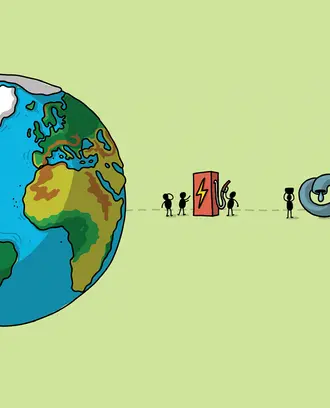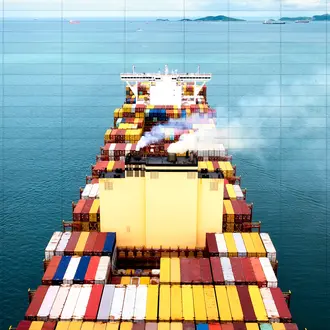Credit: iStock
Outlining the case for economic growth as sustainability cure, not curse
For the first 200 or so years of the industrial era, technology and capitalism were sometimes seen as forces that helped economies flourish, to the detriment of the environment. Eventually, some feared, there wouldn’t be enough resources left to sustain humanity.
But Andrew McAfee sees a plot twist: Those same forces are now helping humans reduce their footprint on the planet. McAfee, a research scientist at MIT Sloan, lays out his optimistic case for how the “voracious appetite” of the industrial era led to technology that improves sustainability in his new book, “More from Less: The Surprising Story of How We Learned to Prosper Using Fewer Resources — and What Happens Next.”
In a recent appearance on the Political Economy podcast from the American Enterprise Institute, McAfee described how technology is helping humans “tread more lightly” on Earth while economic growth continues.
Concern about population growth and human consumption of natural resources reached a high point in the 1970s, McAfee said, as researchers and environmentalists warned that Earth could run out of resources like aluminum, timber, and iron ore.
About 50 years later, though, global reserves of nearly all of those resources are larger despite rapid global economic growth, McAfee said. America is about 30% below its peak timber usage and paper usage is down by about 20% from its peak. Total energy use in the United States has been relatively flat for about a decade and fertilizer use is down despite increasing agricultural output, he said.
“We Americans have a shrinking total footprint on the planet year after year,” McAfee said. “Now maybe it should be shrinking more quickly when it comes to carbon and greenhouse gases, but we are not fouling up the Earth and stripping it bare to fuel our growth anymore.”
What’s changed in the last 50 years? McAfee points to technological advances, like digital tools that replace atoms for bits, and cheaper and more accessible renewable energy.
McAfee said he also sees three additional untapped technology and policy tools to improve conservation and sustainability.
Nuclear power
Nuclear power is a scalable, plentiful, consistent, and safe energy source, McAfee said.
“One of my great frustrations is that most of the people advocating for action on climate — and I wholeheartedly support the idea that we need to stop cooking the planet — are not advocating for nukes. I honestly don’t get that,” he said.
Carbon taxes
While nuclear is a technological “silver bullet,” McAfee said, there’s another untapped powerful option on the policy and economics side: carbon taxes and dividends.
“We have solved bad pollution problems before, and when you think about greenhouse gases as pollution, everything becomes a lot clearer,” he said. “Of course we should be using the low-pollution energy sources, great, but we should also put a price on that pollution. We know that this playbook works — why we’re not all reaching for it is something of a mystery to me.”
Artificial intelligence
Artificial intelligence is another underestimated but potentially powerful conservation source, McAfee said. For example, Google DeepMind turned over operation of a Google data center to a machine-learning system. The team running the center thought it was already energy optimized, but machine learning control improved energy efficiency.
“We have these incredibly powerful tools to help us run to help us work at complicated parts of our infrastructure, and they’re not just a little better, they’re a lot better,” he said.



